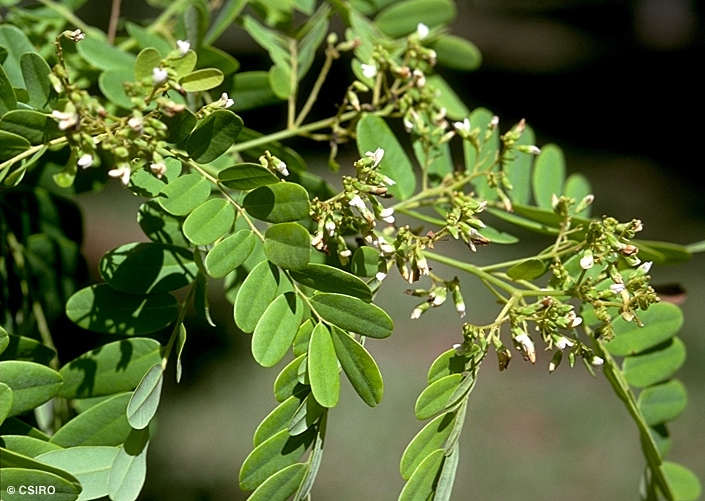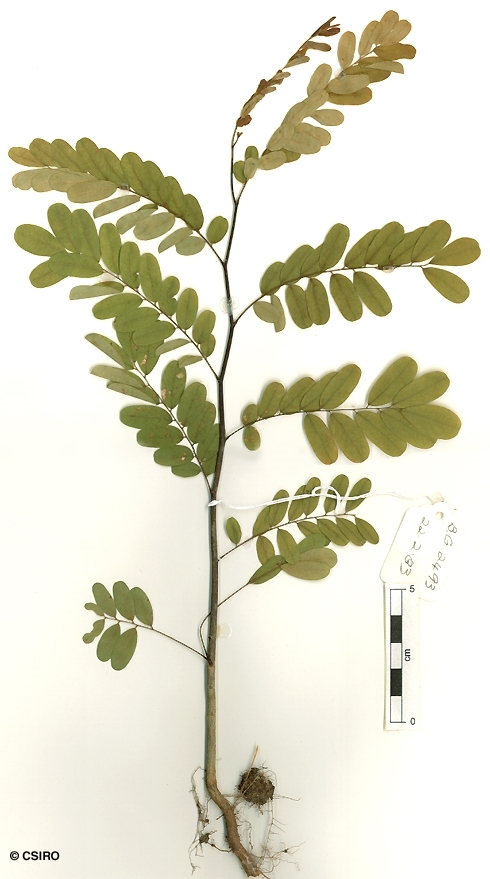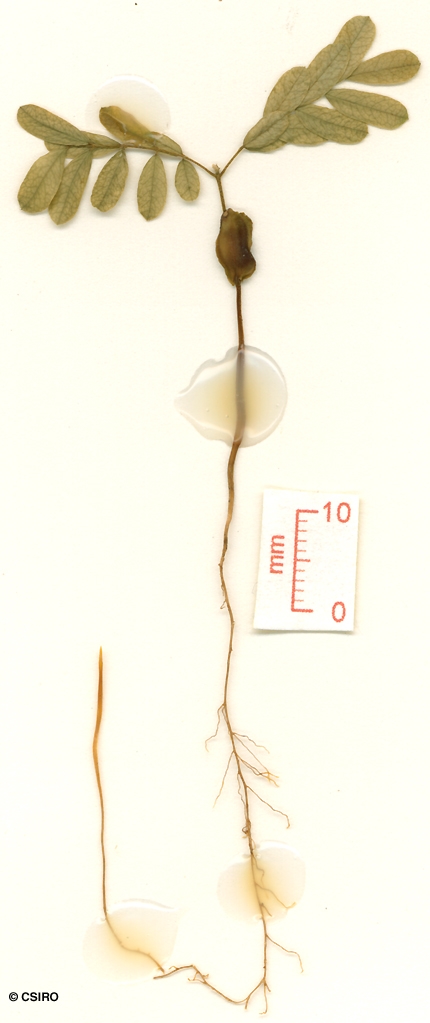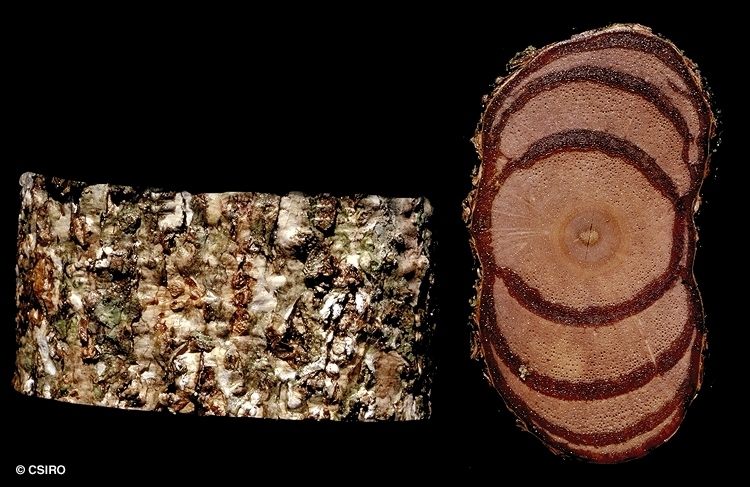Australian Tropical Rainforest Plants - Online edition
Dalbergia ferruginea Roxb.






Prain, D. (1904) Annals of the Royal Botanic Garden, Calcutta 10(1): 73, Type: Roxburgh 276/2584 (BR, BR511085), Malay Island.
Vine stem diameters to 16 cm recorded. Stem laterally flattened and fluted. Blaze darkens markedly on exposure. Young stems smooth and blackish.
Compound leaves usually consist of 10-20 leaflets. Leaflet blades about 15-45 x 5-25 mm, lateral leaflet stalks about 1-2 mm long. Pulvinus present only on the terminal leaflet. Stipules about 1.5-2 mm long, hairy. Tendrils are modified branches.
Cotyledons oblong, about 6-8 x 3-4 mm, base sagittate. First pair of leaves compound, each leaf with about 7-10 shortly stalked leaflets. At the tenth leaf stage: leaves compound with about 18-20 leaflets. Leaflet blades ovate-elliptic, about 12-20 x 7-9 mm, shortly stalked, apex obtuse or emarginate, base obtuse, abruptly narrowed into the stalk. Stipules oblong, about 2 x 0.5 mm, caducous. Seed germination time 13 days.
The name Dalbergia densa var. australis Prain has previously been misapplied to this taxon.





